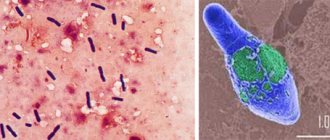Homogentisic acid
| Names | |
| IUPAC name (2,5-dihydroxyphenyl) acetic acid | |
| Other names Melanoic acid | |
| Identifiers | |
| Number of CAS |
|
| 3D model (JSmol) |
|
| CHEBY |
|
| ChemSpider |
|
| DrugBank |
|
| ECHA InfoCard | 100.006.540 |
| KEGG |
|
| MeSH | Homogentisin + acid |
| PubChem C.I.D. |
|
| UNII |
|
| CompTox Control Panel (EPA) |
|
InCHI
| |
Smiles
| |
| Characteristics | |
| Chemical formula | C8H8O4 |
| Molar mass | 168.148 g mol−1 |
| Melting temperature | 150 to 152 °C (302 to 306 °F, 423 to 425 K) |
| Unless otherwise stated, data for materials are given at their standard state (at 25 °C [77 °F], 100 kPa). | |
| Y check (what is YN?) | |
| Links to infoboxes | |
Homogentisic acid
(2,5-dihydroxyphenylacetic acid) is a phenolic acid commonly found in
Arbutus needo
(strawberry) honey.[1]
It is also present in bacterial plant pathogens. Xanthomonas campestris pv.
Phaseoli [2] and also in the yeast
Yarrowia lipolytica
[3] where it is associated with the production of brown pigments. It is oxidatively dimerized to form hipposudoric acid, one of the main components of hippopotamus "blood sweat".
Less known as melanic acid
, the name chosen is William Prout.
In what cases is a study prescribed?
- For the diagnosis of hereditary metabolic diseases (organic acidemia/aciduria, aminoacidopathy),
- assessment of metabolism in systemic diseases of a non-hereditary nature in children and adults,
- to identify metabolic disorders in cases of unwellness without an identified disease, including suspected intoxication with benzene derivatives (used in industry, in the production of drugs, plastics, rubber, dyes),
- to control metabolic processes in people who adhere to a healthy lifestyle,
- to identify the causes of mitochondrial dysfunction.
Analysis of the spectrum of organic acids in urine using gas chromatography with mass spectrometry (GC/MS)
Interpretation of research results contains information for the attending physician and is not a diagnosis. The information in this section should not be used for self-diagnosis or self-treatment. The doctor makes an accurate diagnosis using both the results of this examination and the necessary information from other sources: medical history, results of other examinations, etc.
Reference values for determined parameters
| Acid name | Unit change | Ref. meaning * | Increased due to pathology/secondary causes |
| 2-hydroxybutyrate | mm/M CRE | > 3 | |
| 2-hydroxyvaleric | mm/M CRE | > 2 | |
| 2-hydroxyglutaric | mm/M CRE | > 16 | |
| 2-hydroxyphenylacetate | mm/M CRE | > 2 | |
| 2-Hydroxy-3-methylvaleric | mm/M CRE | > 2 | |
| 2-hydroxyisobutyrate | mm/M CRE | > 2 | |
| 2-hydroxyisovaleric | mm/M CRE | > 2 | |
| 2-hydroxyisocaproic | mm/M CRE | > 2 | |
| 2-methyl-3-hydroxybutyrate | mm/M CRE | > 11 | |
| 2-Methyl acetoacetate | mm/M CRE | not normally determined | > 0 |
| 2-methylbutyrylglycine | mm/M CRE | > 2 | |
| 2-oxo-3-methylvaleric | mm/M CRE | > 2 | |
| 2-oxoadipic | mm/M CRE | > 2 | |
| 2-oxobutyrate | mm/M CRE | > 2 | |
| 2-oxoglutaric | mm/M CRE | > 152 | |
| 2-oxoisovaleric | mm/M CRE | > 2 | |
| 2-oxoisocaproic | mm/M CRE | > 2 | |
| 3,4-dihydroxybutyrate | mm/M CRE | not normally determined | > 0 |
| 3-hydroxy-3-methylglutaric | mm/M CRE | > 36 | |
| 3-hydroxybutyrate | mm/M CRE | > 3 | |
| 3-hydroxyglutaric | mm/M CRE | > 2 | |
| 3-hydroxydecanedioic | mm/M CRE | > 2 | |
| 3-hydroxyisobutyrate | mm/M CRE | > 2 | |
| 3-hydroxyisovaleric | mm/M CRE | > 46 | |
| 3-hydroxyisocaproic | mm/M CRE | > 2 | |
| 3-hydroxypropionic | mm/M CRE | 3-10 | > 10 |
| 3-hydroxysebacic | mm/M CRE | > 2 | |
| 3-methylglutaconic | mm/M CRE | > 9 | |
| 3-methyladipic | mm/M CRE | > 2 | |
| 3-methylglutaric | mm/M CRE | > 7 | |
| 3-methylcrotonylglycine | mm/M CRE | > 2 | |
| 4-hydroxybutyrate | mm/M CRE | > 2 | |
| 4-hydroxyisovaleric | mm/M CRE | > 2 | |
| 4-Hydroxyphenylacetate | mm/M CRE | 6 — 28 | > 28 |
| 4-hydroxyphenyllactate | mm/M CRE | 6 — 28 | > 28 |
| 4-hydroxyphenylpyruvate | mm/M CRE | > 2 | |
| 5-hydroxyhexane | mm/M CRE | > 7 | |
| 7-hydroxyoctane | mm/M CRE | > 2 | |
| N-acetylaspartate | mm/M CRE | > 2 | |
| Adipic | mm/M CRE | > 12 | |
| Acetoacetate | mm/M CRE | > 2 | |
| Butyrylglycine | mm/M CRE | > 2 | |
| Vanillyl lactate | mm/M CRE | > 0,6 | |
| Vanillylmandeline | mm/M CRE | > 15 | |
| Hexanoylglycine | mm/M CRE | > 2 | |
| Glycolic | mm/M CRE | 11 — 103 | > 103 |
| Glycerol | mm/M CRE | > 9 | |
| Glutaric | mm/M CRE | > 2 | |
| Homovanillic | mm/M CRE | 2 — 15 | > 15 |
| Homogentisic | mm/M CRE | > 10 | |
| Isobutyrylglycine | mm/M CRE | > 2 | |
| Isovalerylglycine | mm/M CRE | > 2 | |
| Lactate | mm/M CRE | > 25 | |
| Malikovaya | mm/M CRE | > 2 | |
| Malonovaya | mm/M CRE | > 2 | |
| Mevalon Lactone | mm/M CRE | > 2 | |
| Methylmalonic | mm/M CRE | > 2 | |
| Methyl succinate | mm/M CRE | > 3 | |
| Methyl citrate | mm/M CRE | > 12 | |
| Orotovaya | mm/M CRE | > 11 | |
| Pyruvate | mm/M CRE | >12 | |
| Propionylglycine | mm/M CRE | > 2 | |
| Sebacine | mm/M CRE | > 2 | |
| Suberylglycine | mm/M CRE | > 2 | |
| Suberic | mm/M CRE | > 2 | |
| Succinate | mm/M CRE | 0,5 — 16 | > 16 |
| Succinylacetone | mm/M CRE | > 2 | |
| Tiglilglycine | mm/M CRE | > 2 | |
| Phenyl lactate | mm/M CRE | > 2 | |
| Phenylpyruvate | mm/M CRE | > 2 | |
| Fumarovaya | mm/M CRE | > 2 | |
| Ethymalon | mm/M CRE | > 7 |
* Reference values have no age differences.
Characteristic profiles of organic acids in hereditary metabolic diseases determined by GC/MS
| № | Diseases caused by impaired amino acid metabolism | Metabolites: ↑ |
| 1 | Leucinosis (branched chain ketonuria, maple syrup urine disease, maple syrup disease) | 2-oxoisocaproic, 2-oxoisovaleric, 2-oxo-3-methylvaleric, 2-hydroxyisocaproic, 2-hydroxyisovaleric, 2-hydroxy-3-methylvaleric acid: ↑ |
| 2 | Tyrosinemia type 1 | 4-hydroxyphenyl lactate, succiniacetone, 4-hydroxyphenylpyruvate: ↑ |
| 3 | Tyrosinemia type 2 | 4-hydroxyphenyllactate, 4-hydroxyphenylpyruvate: ↑ |
| 4 | Phenylketonuria | Phenyl lactate, phenylpyruvate, 2-hydroxyphenylacetate, 4-hydroxyphenyl lactate, 4-hydroxyphenylpyruvate: ↑ |
| Organic aciduria | Metabolites: ↑ | |
| 5 | Isovaleric acidemia | 3-hydroxyisovaleric acid, isovaleriglycine: ↑ |
| 6 | 3-methylcrotonyl-CoA carboxylase deficiency | 3-hydroxyisovaleric acid, 3-methylcrotonylglycine: ↑ |
| 7 | Multiple carboxylase deficiency | 3-hydroxyisovaleric acid, lactate, methyl citrate, 3-hydroxypropionic acid, 3-methylcrotonylglycine: ↑ |
| 8 | 3-hydroxy-3-methylglutaric aciduria | 3-hydroxy-3-methylglutaric acid, 3-methylglutaconic acid, 3-methylglutaric acid, 3-hydroxyisovaleric acid, 3-methylcrotonylglycine: ↑ |
| 9 | 3-methylglutaconic aciduria (9 types) | 3-methylglutaconic acid, 3-methylglutaric acid |
| 10 | 3-ketothiolase deficiency | 2-methyl-3-hydroxybutyrate, 2-methylacetoacetate, 3-hydroxybutyrate, tiglylglycine, acetoacetate: ↑ |
| 11 | 2-methylbutyryl-CoA dehydrogenase deficiency | 2-methylbutyrylglycine: ↑ |
| 12 | 2-methyl-3-hydroxybutyryl-CoA dehydrogenase deficiency | 2-methyl-3-hydroxybutyrate, tiglylglycine: ↑ |
| 13 | Propionic acidemia | 3-hydroxypropionic acid, methyl citrate, propionylglycine, tiglylglycine: ↑ |
| 14 | Methylmalonic aciduria (various types) | Methylmalonic acid, 3-hydroxypropionic acid, methyl citrate: ↑ |
| 15 | Glutaric acidemia type 1 | Glutaric acid, 3-hydroxyglutaric acid: ↑ |
| 16 | Biotinidase deficiency | 3-hydroxyisovaleric acid, 3-hydroxypropionic acid, tiglylglycine, 3-methylcrotonylglycine, methyl citrate, lactate: ↑ |
| Diseases caused by impaired B-oxidation | Metabolites: ↑ | |
| 17 | Glutaric acidemia type 2 (multiple acyl-CoA dehydrogenase deficiency) | Glutaric acid, ethylmalonic acid, adipic acid, suberic acid, 2-hydroxyglutaric acid, isovalerylglycine, isobutyrylglycine, 2-methylbutyrylglycine: ↑ |
| 18 | Fazio-Londe/Brown-Violette-van Leyer syndrome | Glutaric acid, ethylmalonic acid, adipic acid, suberic acid, 2-hydroxyglutaric acid, isovalerylglycine, isobutyrylglycine, 2-methylbutyrylglycine: ↑ |
| 19 | Short-chain fatty acid acyl-CoA dehydrogenase deficiency | Ethylmalonic acid: ↑ |
| 20 | Medium chain acyl-CoA fatty acid dehydrogenase deficiency | 5-hydroxyhexanoic, 7-hydroxyoctane, adipic, suberic, sebacic acids, hexanoylglycine, suberylglycine: ↑ |
| 21 | Very long chain fatty acid acyl-CoA dehydrogenase deficiency | Adipic, suberic, sebacic acids: ↑ |
| 22 | Long-chain 3-hydroxyacyl-CoA fatty acid dehydrogenase deficiency | Adipic, suberic, sebacic acids, 3-hydroxybutyrate, 3-hydroxyisobutyrate, acetoacetate: ↑ |
| 23 | Trifunctional mitochondrial protein deficiency | Suberic, sebacic, 3-hydroxysebacic: ↑ |
| 24 | Short-chain 3-hydroxy-acyl-CoA dehydrogenase deficiency | 3,4-dihydroxybutyrate, 3-hydroxyglutaric acid: ↑ |
| 25 | Carnitine acylcarnitine translocase deficiency | Adipic, suberic, sebacic acids: ↑ |
| 26 | Ethylmalonic encephalopathy | Ethylmalonic acid, isovalerylglycine, methylsuccinate, 2-methylbutyrylglycine, isobutyrylglycine: ↑ |
| Urea cycle disorder | Metabolites: ↑ | |
| 27 | NNN syndrome, arginemia, ornithine transcarbamylase deficiency, arginine succinic aciduria, type 1 citrullinemia | Orotic acid: ↑ |
| 28 | Carbamoylphosphate synthase deficiency | 3-methylglutaconic acid: ↑ |
| Carbohydrate metabolism disorder | Metabolites: ↑ | |
| 29 | Fructose 1,6-biphosphatase deficiency | Lactate, glycerol: ↑ |
| 30 | Glycogenosis type 1 | Lactate, 3-methylglutaconic acid, 3-methylglutaric acid: ↑ |
| 31 | Galactosemia | 4-hydroxyphenyllactate, 4-hydroxyphenylpyruvate: ↑ |
| 32 | Hereditary fructose intolerance | 4-hydroxyphenyllactate, 4-hydroxyphenylpyruvate: ↑ |
| 33 | Pyruvate dehydrogenase deficiency | Lactate, 2-oxoglutaric acid, succinate, malic acid, 2-oxoisocaproic acid, 2-oxoisocaproic acid, 2-oxo-3-methylvaleric acid, 2-hydroxyisocaproic acid, 2-hydroxyisovaleric acid, 2-hydroxy-3-methylvaleric acid: ↑ |
| 34 | Pyruvate carboxylase deficiency | Lactate, pyruvate, succinate, malic acid, fumaric acid: ↑ |
| 35 | Primary and secondary mitochondrial pathologies | Lactate, pyruvate, succinate, malic acid, fumaric acid, 2-hydroxyisobutyrate, 3-hydroxybutyrate, 2-oxoglutaric acid: ↑ |
| Other | Metabolites: ↑ | |
| 36 | Lactate acidosis | Lactate, pyruvate, 2-hydroxybutyrate, 2-hydroxyisobutyrate, 3-hydroxybutyrate, 4-hydroxyphenyllactate: ↑ |
| 37 | Hyperoxaluria type 1 | Glycolic acid: ↑ |
| 38 | Glycerol kinase deficiency | Glycerol: ↑ |
| 39 | 3-hydroisobutyrate aciduria/ketoacidosis | 3-hydroxyisobutyrate, acetoacetate: ↑ |
| 40 | Fumaric aciduria | Fumaric acid, lactate, 2-oxoglutaric acid, succinate: ↑ |
| 41 | Malonic aciduria | Malonic, methylmalonic acid: ↑ |
| 42 | Mevalonic aciduria | Mevalon lactone (may be normal outside of crisis): ↑ |
| 43 | Alkaptonuria | Homogentisic acid: ↑ |
| 44 | Canavan disease | N-acetylaspartate: ↑ |
| 45 | Impaired peroxisome biogenesis | Adipic, suberic, sebacic, 3-hydroxysebacic acids, 4-hydroxyphenyllactate: ↑ |
| 46 | 2-hydroxyglutaric aciduria | 2-hydroxyglutaric acid: ↑ |
| 47 | Aromatic L-amino acid deficiency | Vanillyl lactate: ↑ |
| 48 | Neuroblastoma | Vanillyl lactate, homovanillic, vanilla almond: ↑ |
| 49 | Neurotransmitter metabolism disorder | Vanillyl lactate, homovanillic, vanilla almond: ↑ |
| 50 | Semialdehyde dehydrogenase deficiency (4-hydroxybutyrate acidurium) | 4-hydroxybutyrate, 3,4-dihydroxybutyrate: ↑ |
What exactly is determined during the analysis process?
During the research, the following are determined by gas chromatography with mass spectrometric detection:
Carbohydrate metabolism markers: lactic acid (lactate), pyruvic acid (pyruvate)
Metabolism markers in the tricarboxylic acid cycle (Krebs cycle), cell energy supply, mitochondrial dysfunction, amino acid metabolism, sufficiency of B vitamins, coenzyme Q and magnesium: Citric acid (citrate), cis-Aconitic acid (propylenetricarboxylic acid), Isocitric acid (isocitrate), 2-Ketoglutaric acid (2-oxoglutaric acid), Succinic acid (succinic acid, succinate), Fumaric acid (boletic acid), Malic acid (malate, hydroxysuccinic acid), 2-Methylglutaric (2-methylpentanedioic acid)
Markers of ketogenesis, dysregulation of carbohydrate metabolism and beta-oxidation of fatty acids: Acetoacetic acid (3-ketobutyric acid, acetoacetate), 3-Hydroxybutyric acid, Malonic acid (propanedioic acid)
Metabolism markers of branched amino acids Valine, leucine, isoleucine- 2: Hydroxy-3-methylbutanoic acid (2-hydroxyisovaleric acid), 3-Methylcrotonylglycine, 3-Methylglutaric acid (3-methylpentanedioic acid), Isovalerylglycine (N-isopentanoylglycine)
Aromatic amino acid metabolism markers (phenylalanine and tyrosine): para-Hydroxyphenyllactic acid, para-Hydroxyphenylpyruvic acid, Homogentisic acid (2,5-dihydroxyphenylacetic acid, melanic acid), 3-Phenyllactic acid (2-hydroxy-3-phenylpropionic acid), Phenylglyoxylic acid acid (benzoylformic acid), mandelic acid (phenylglycolic acid)
Markers of tryptophan metabolism: Quinolinic acid (quinolinic; 2,3-pyridinedicarboxylic acid). Picolinic acid
Oxalic acid (oxalate) metabolism markers: Glycolic acid (hydroxyacetic acid), Glyceric acid (2,3-dihydroxypropanoic acid), Oxalic acid (ethanedioic, oxalic acid)
Markers of sufficiency of vitamins B1, B2 and lipoic acid: 2-Ketoisovaleric acid, 3-Methyl-2-oxovaleric acid (3-methyl-2-oxopentanoic acid), 4-Methyl-2-oxovaleric acid (2-ketoisocaproic acid)
Markers of sufficiency of vitamins B2, B5, microsomal omega-oxidation of fatty acids and carnitine deficiency: Glutaric acid (pentanedioic acid), Sebacic acid (decanedioic acid), Adipic acid (hexanedioic acid), Suberic acid (suberic, octanedioic acid)
Markers of sufficiency of vitamins B2, B5 and auxiliary oxidation of butyrate (butyric acid): Ethylmalonic acid (2-carboxybutyric acid), Methylsuccinic acid (pyrotartaric acid)
Markers of vitamin B6 sufficiency: Xanthurenic acid (8-hydroxykinurenic acid), Kynurenic acid
Markers of vitamin B7 (biotin) and B8 (inositol) sufficiency: 3-Hydroxyisovaleric acid (3-hydroxy-3-methylbutanoic acid)
Markers of impaired synthesis of Coenzyme Q10: 3-Hydroxy-3-methylglutaric acid (meglutol)
Markers of vitamin B9 sufficiency: Formiminoglutamic acid
Markers of vitamin B12 sufficiency: Methylmalonic acid
Markers of detoxification and endogenous intoxication: 2-Hydroxybutyric acid (2-hydroxybutanoic acid), Pyroglutamic acid (5-oxoproline), N-Acetyl-L-aspartic acid (N-acetyl-L-aspartate), Orotic acid (pyrimidine-4- carboxylic acid)
Markers of intoxication with benzene derivatives: Hippuric acid (N-benzoylglycine), Methylhippuric acids, sum., Phenylglyoxylic acid (benzoylformic acid), Mandelic acid (phenylglycolic acid)
Bacterial markers of intestinal dysbiosis: Benzoic acid (dracylic acid), ortho-Hydroxyphenylacetic acid, para-Hydroxybenzoic acid (para-carboxyphenol), Hippuric acid (N-benzoylglycine), Methylhippuric acids, sum., ortho-Methylhippuric acid, meta-Methylhippuric acid , para-Methylhippuric acid, Tricarballylic acid (1,2,3-propantricaboxylic). 3-Indolylacetic acid (heteroauxin), Caffeic acid (3,4-dihydroxycinnamic, 3,4-dihydroxybenzenacrylic)
Yeast and fungal markers of intestinal dysbiosis: Tartaric acid (dioxysuccinic, tartaric). 2-Hydroxy-2-methylbutanedioic acid (citric-malic acid)
Calculated coefficients: Quinolinic/xanthurenic acid ratio
Determination of the concentration of organic acids in the blood (methylmalonic, isovaleric, etc.), used for the diagnosis of congenital organic acidemia (aciduria).
* Determined acids:
Lactic acid Glycolic acid Glutaric acid Pyruvic acid Adipic acid Isovaleric acid Hippuric acid 3-Hydroxybutyric acid 3-Hydroxy-3-Methylglutaric acid Hydroxyphenyllactic acid 4-hydroxyphenylpyruvic acid 4-Hydroxyphenylacetic acid Methylmalonic acid Ethylmalonic acid acid Mevalonic acid 3-methyl- 2-oxovaleric acid 4-methyl-2-oxovaleric acid 2-Hydroxyisocaproic acid Phenylpyruvic acid Phenyllactic acid Homogentisic acid 2-methyl-3-hydroxybutyric acid 3-methylglutaric acid Suberic acid Sebacic acid Succinic acid N- acetylaspartic acid glyceric acid
Synonyms Russian
Diagnosis of organic acidemia (aciduria).
English synonyms
Organic acids, Blood.
Research method
Gas chromatography-mass spectrometry (GC-MS).
What biomaterial can be used for research?
Venous blood. How to properly prepare for research?
- Eliminate alcohol from your diet for 24 hours before the test.
- Do not eat for 8 hours before the test; you can drink clean still water.
- Avoid physical and emotional stress for 30 minutes before the test.
- Do not smoke for 3 hours before the test.
General information about the study
Organic acids are organic substances that have the properties of acids. They are formed under the action of enzymes as a result of the metabolism of proteins, carbohydrates and fats and differ in structure and composition. When the function of these enzymes is impaired, organic acids accumulate in the blood and tissues. Most often, enzyme dysfunction is congenital. In this case, they talk about congenital organic acidemia (aciduria). There is a huge number of organic acids and, consequently, a variety of congenital acidemias. The most common are methylmalonic and isovaleric acidemia, but there are other, more rare variants.
Congenital acidemias have much in common. Thus, most congenital acidemias are autosomal recessive diseases that manifest themselves in infancy or early childhood. Regardless of the nature of the organic acid, its excess has a negative effect on the brain. This explains why congenital acidemia most often manifests itself in the form of disorders of the nervous system: mental retardation, seizures, hypo/hypertonicity or dystonia, ataxia, encephalopathy, delayed speech development, visual impairment, extrapyramidal symptoms and others. Other signs of congenital acidemia include metabolic acidosis, hypoglycemia, nausea/vomiting, skin rash, hepatomegaly, ketoacidosis or ketonuria, and signs of dysmorphogenesis. The main danger of congenital acidemia is that if they are not corrected in a timely manner, these changes are irreversible, which is why early diagnosis and treatment of diseases of this group is so important. The basis for diagnosing congenital acidemia is laboratory tests. Since all organic acidemias are similar to each other, to diagnose them, a comprehensive analysis is carried out, in which the concentration of all organic acids is determined at once.
Laboratory diagnosis of acidemia is not very simple. This is due to the fact that the blood simultaneously contains a huge amount of organic acids, and a transient increase in their concentration can be observed as a result of taking medications, changes in diet, or even in the composition of the intestinal microflora. One of the best methods for diagnosing congenital acidemia is gas chromatography-mass spectrometry. This method allows you to quickly separate acids from each other and determine the nature of the organic acid.
An analysis for organic acids is carried out if the child has: 1) A specific, strange smell of urine; 2) Metabolic acidosis, transient or permanent, with an increased or normal anion gap; 3) Persistent vomiting, especially if metabolic acidosis is observed; 4) Acute illness in infancy, especially if hyperammonemia and metabolic acidosis are observed; 5) Progressive extrapyramidal symptoms; 6) Reye's syndrome, especially when it occurs in infancy, in the presence of repeated attacks and a family history of this disease; 7) Any hereditary disease with an unknown cause. Given the irreversible consequences that organic acidemia can lead to, some countries and families prefer to conduct a preventive (screening) test for organic acids on all newborn children.
The method for determining organic acids using gas chromatography-mass spectrometry is one of the most accurate, however, false-positive and false-negative test results are still possible. Therefore, test results should be interpreted taking into account all anamnestic, clinical and other laboratory data.
What is the research used for?
- For the diagnosis of congenital organic acidemia (aciduria).
When is the study scheduled?
In the presence of:
- specific, strange smell of urine;
- metabolic acidosis, transient or permanent, with an increased or normal anion gap;
- persistent vomiting, especially if metabolic acidosis is observed;
- acute illness in infancy, especially if hyperammonemia and metabolic acidosis are observed;
- progressive extrapyramidal symptoms;
- Reye's syndrome, especially when it occurs in infancy, in the presence of repeated attacks and a family history of this disease;
- any hereditary disease of unknown cause;
- during a preventive (screening) examination of a newborn.
What do the results mean?
Reasons for the increase:
| Organic acid | Disease |
| Isovalerylglycine (continuously) and 3-hydroxyisovaleric acid (intermittently) | Isovaleric acidemia |
| 3-methylcrotonylglycine and 3-hydroxyisovaleric acid | 3-methylcrotonylglycinuria |
| 3-hydroxy-3-methylglutaric, 3-methylglutaric, 3-methylglutaconic and 3-hydroxyisovaleric acid | 3-hydroxy-3-methylglutaric acidemia |
| 2-methyl-3-hydroxybutyrate and 2-methylacetoacetylic acid | 2-methyl-3-hydroxybutyric acidemia |
| Methyl citrus acid and 3-hydroxypropionic acid | Propionic acidemia |
| Methylmalonic acid | Methylmalonic acidemia |
| Glutaric acid (consistently), 3-hydroxyglutaric acid (common), and glutaconic acid (occasionally) | Glutaric acidemia |
| Glutaric acid, ethylmalonic acid and isovalerylglycine (almost always), 2-hydroxyglutaric acid (often), 3-hydroxyglutaric acid - absent | Glutaric acidemia type II |
| Pyroglutamic acidemia | Pyroglutamic acid |
| D-glycerol acidemia | D-glyceric acid |
Reasons for the downgrade:
- disease control during treatment.
What can influence the result?
- Features of the diet;
- taking certain medications.
Preparing for the study
For research, an average portion of morning urine in a volume of 30-50 ml is collected in a sterile container. Deliver the sample to the laboratory in the morning of the same day.
48 hours before collection, the following should be excluded from the diet: apples, grapes (raisins), pears, cranberries, kiwis, plums, bananas, avocados, pineapple, beets, tomatoes and juices from these fruits/vegetables; echinacea, reishi mushrooms, ribose, food additive E409 (arabinogalactan), coffee, tea, alcohol, nutritional supplements. Drinking regime is standard.
24 hours before urine collection, exclude: physical and emotional overload; air travel; temperature effects (visiting baths and saunas, hypothermia, etc.); violation of the sleep-wake pattern; instrumental medical examinations (ultrasound, x-ray, etc.) or procedures (physiotherapy, massage, etc.).









